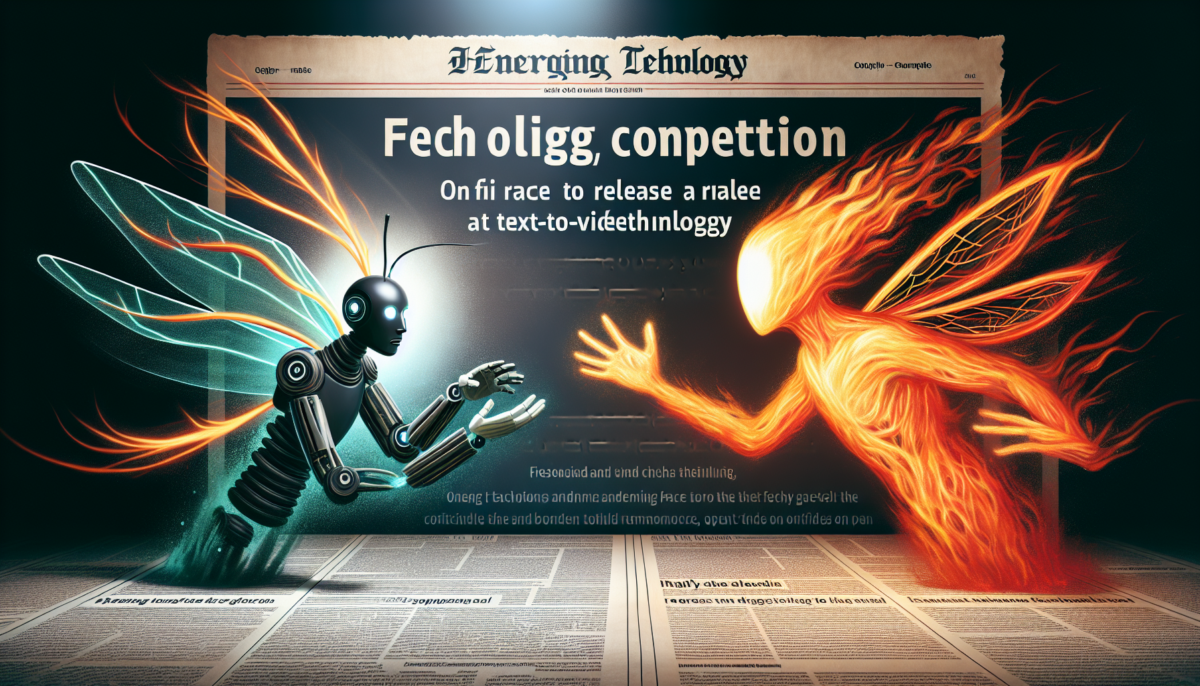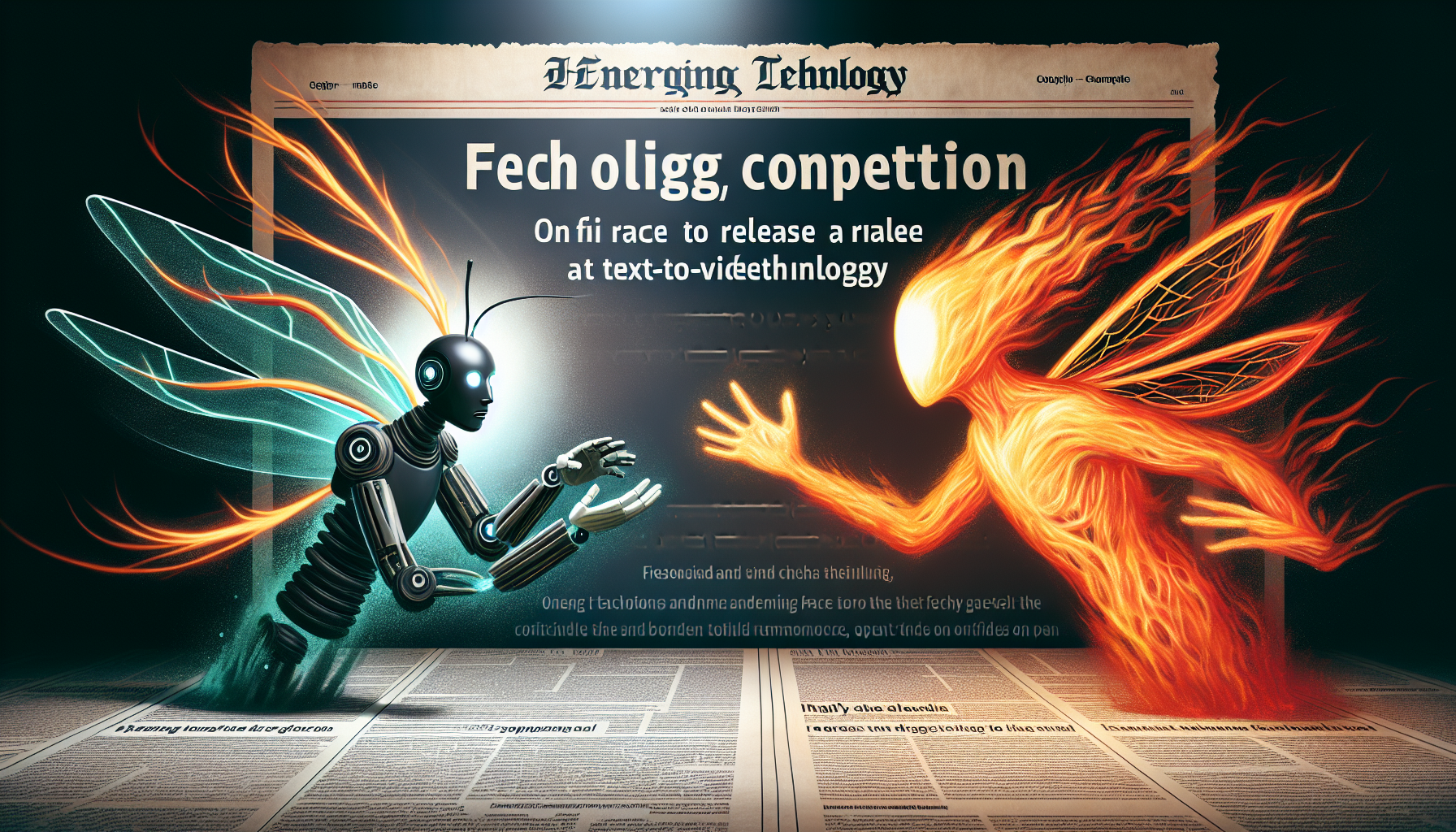“Adobe Hints at Firefly Video Model: Can They Outpace OpenAI in Releasing Text-to-Video?”
We independently review everything we recommend. When you buy through our links, we may earn a commission which is paid directly to our Australia-based writers, editors, and support staff. Thank you for your support!

Adobe’s Firefly Video Model: A Breakthrough in AI-Enhanced Video Editing
Once again, Adobe has expanded the horizons of creativity with the launch of its Firefly Video Model, a generative AI tool poised to transform video editing. This cutting-edge technology aims to ease the intricate challenges faced by video editors, enabling them to accomplish more in a shorter timeframe. But will Adobe outpace OpenAI in unveiling a text-to-video capability?
Quick Overview:
- Adobe’s Firefly Video Model brings AI-driven video editing functionalities for professionals.
- Enables users to create video content from text instructions and still images.
- Features such as “Generative Extend” assist editors in bridging gaps and streamlining transitions effortlessly.
- Text-to-Video and Image-to-Video functionalities set to be incorporated into Adobe Premiere Pro this year.
- Firefly models are trained on secure, licensed material—providing a commercially viable solution.
- Adobe Firefly has already produced over 12 billion images worldwide.
Generative AI in Video Editing: A Transformative Shift
Adobe’s Firefly Video Model, initially introduced earlier this year, marks a considerable leap forward in generative AI technology. This tool is crafted to aid video editors and filmmakers by automating labor-intensive tasks, allowing them to prioritize creativity over technical challenges.
Picture being able to generate B-roll footage from a straightforward text prompt or effortlessly turn still images into dynamic video clips. That’s precisely what the innovative Firefly Video Model seeks to provide. With features such as Text-to-Video and Image-to-Video, Adobe is establishing itself as a frontrunner in AI-fueled video production.

Integration with Adobe Premiere Pro: Generative Extend
Later this year, the Firefly Video Model will be integrated into Adobe Premiere Pro, enabling users to access AI capabilities directly within one of the industry’s top video editing software. A highlight of these features is “Generative Extend,” which can address gaps in video, create smooth transitions, and prolong shots for ideal timing—with just a few clicks.
For example, if a scene necessitates a longer hold to synchronize with a musical crescendo, Generative Extend can gracefully extend the shot without needing reshoots or complicated edits. It’s a time-saving feature that could be extremely beneficial for professionals who often operate on tight schedules.
Text-to-Video and Image-to-Video: The Next Step in Content Creation
The most thrilling aspect of the Firefly Video Model is likely its capability to generate video content from text or still images. Text-to-Video allows users to enter prompts, modify camera angles, apply motion effects, and more to produce high-quality video clips. This could revolutionize the work of creators needing to produce quick B-roll footage or animations.
In a similar vein, Image-to-Video features will permit editors to enliven still photos or illustrations, converting them into engaging live-action videos. Whether for marketing, social media, or film production, these tools are set to drastically reduce the time required for creating professional-quality content.

Commercial Safety: A Major Priority for Adobe
A critical element of Adobe’s Firefly models is their dedication to commercial safety. All Firefly models—including the forthcoming Video Model—are solely trained on licensed content that Adobe has the right to use. This ensures that editors and creators can proceed confidently, knowing they are utilizing ethically and legally sound tools.
As generative AI advances, discussions about copyright violation and ethical usage have gained traction. Adobe’s methodology guarantees that Firefly remains a commercially secure option, circumventing the challenges that other generative AI models might encounter.
AI-Driven Collaboration: Enhancing the Creative Workflow
Adobe has consistently been at the forefront of delivering tools that encourage collaboration among creative teams. The addition of AI-driven features like Firefly is a significant stride in this direction. Built-in tools like Frame.io are already simplifying the review and approval process, and the introduction of AI capabilities will only enhance teamwork efficiency.
For instance, with Firefly’s generative functionality, editors can swiftly prototype scenes, communicate their creative vision to stakeholders, and make updates in real-time. This minimizes friction during the approval process and allows for quicker, more effective production timelines.
Conclusion
Adobe’s Firefly Video Model is poised to transform video editing by harnessing the potential of generative AI. Whether it’s bridging gaps in footage, crafting videos from text prompts, or converting still images into live-action segments, this tool aspires to be an invaluable resource for video professionals. With its integration into Adobe Premiere Pro and a commitment to commercial safety, Firefly is set to lead the way in AI-driven video production.
Q&A: Essential Inquiries Regarding Adobe’s Firefly Video Model
Q: What is Adobe’s Firefly Video Model?
A:
The Firefly Video Model is Adobe’s new generative AI tool designed to assist video editors by automating processes such as creating video content from text prompts or still images. Its goal is to streamline the video editing experience and enhance creativity.
Q: When will the Firefly Video Model be available?
A:
The Firefly Video Model is anticipated to be accessible later this year and will be incorporated into Adobe Premiere Pro. Users interested can register for the beta version on Adobe’s Firefly website.
Q: Will the Firefly Video Model be safe for commercial use?
A:
Yes, Adobe’s Firefly models are trained exclusively on licensed content that Adobe has permission to use. This guarantees that the content produced is commercially secure and avoids potential copyright issues.
Q: What are the main features of Adobe’s Firefly Video Model?
A:
Key features include Text-to-Video, Image-to-Video, and Generative Extend. These functionalities enable users to create videos from text inputs, convert still images into live-action clips, and utilize AI-generated content to fill footage gaps.
Q: How does Generative Extend operate?
A:
Generative Extend is a feature that allows editors to elongate video clips, smooth out transitions, or maintain a shot for longer durations. This is particularly beneficial for addressing gaps in footage or syncing edits perfectly with audio tracks.
Q: How does Firefly facilitate collaboration in video editing?
A:
Firefly’s generative AI features allow for rapid mock-ups and immediate revisions, enabling creative teams to share ideas with stakeholders more effectively. Coupled with Adobe’s Frame.io, the review and approval workflow becomes much more streamlined.
Q: Will the Firefly Video Model be integrated with other Adobe tools?
A:
Indeed, the Firefly Video Model will be included in Adobe Premiere Pro, and is expected to function seamlessly with other Adobe Creative Cloud applications, enhancing interconnected creative workflows.
